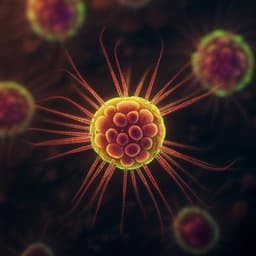
Chemistry
Unlocking bimetallic active sites via a desalination strategy for photocatalytic reduction of atmospheric carbon dioxide
X. Feng, R. Zheng, et al.
Discover the groundbreaking research by Xuezhen Feng, Renji Zheng, Caiyan Gao, Wenfei Wei, Jiangguli Peng, Ranhao Wang, Songhe Yang, Wensong Zou, Xiaoyong Wu, Yongfei Ji, and Hong Chen on a novel approach to enhance CO2 reduction efficiency using ultrathin 2D bimetallic oxyhalides. This innovative desalination technique opens new avenues for designing catalysts that could be pivotal in environmental and energy applications.
~3 min • Beginner • English
Related Publications
Explore these studies to deepen your understanding of the subject.







